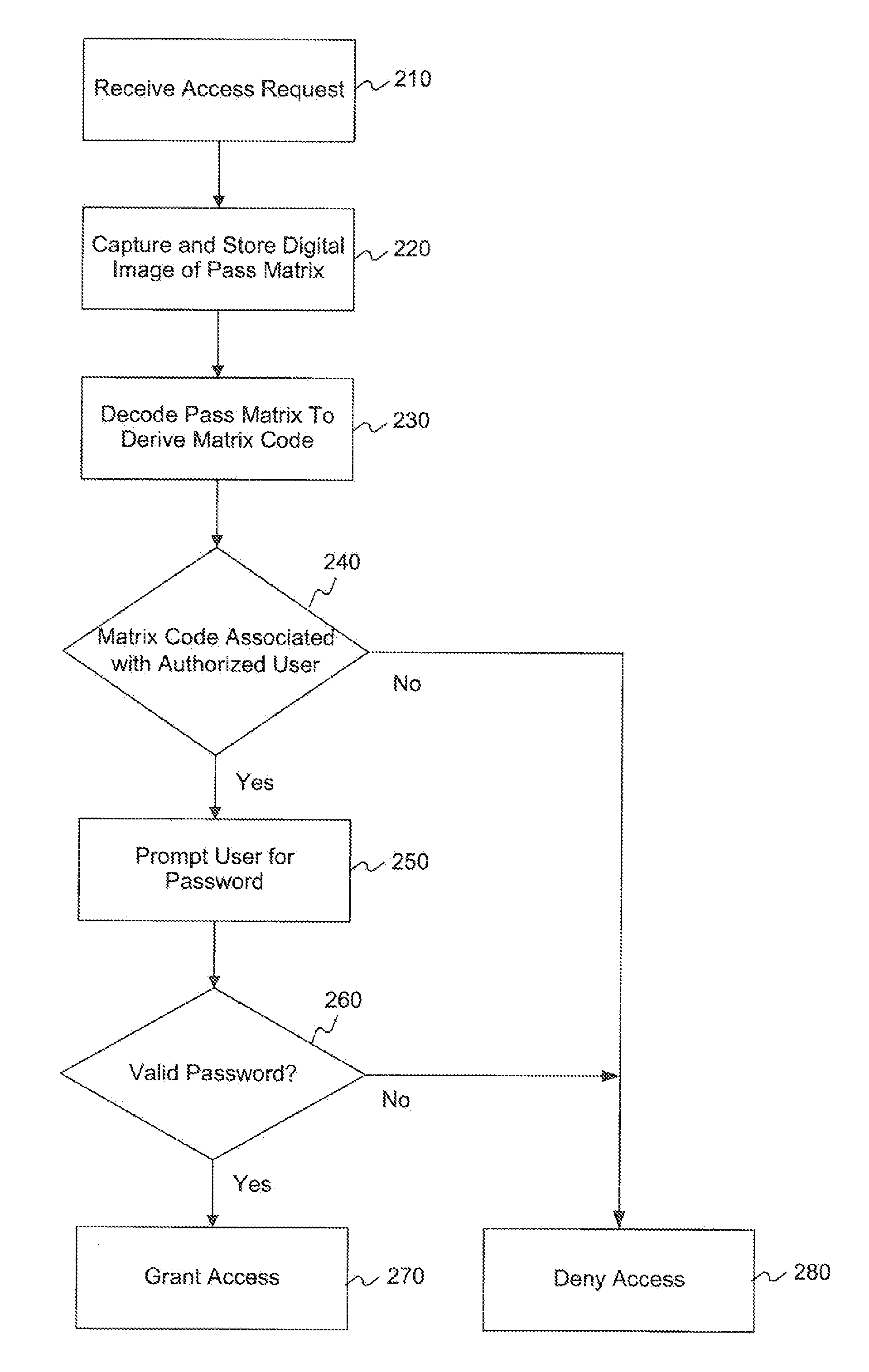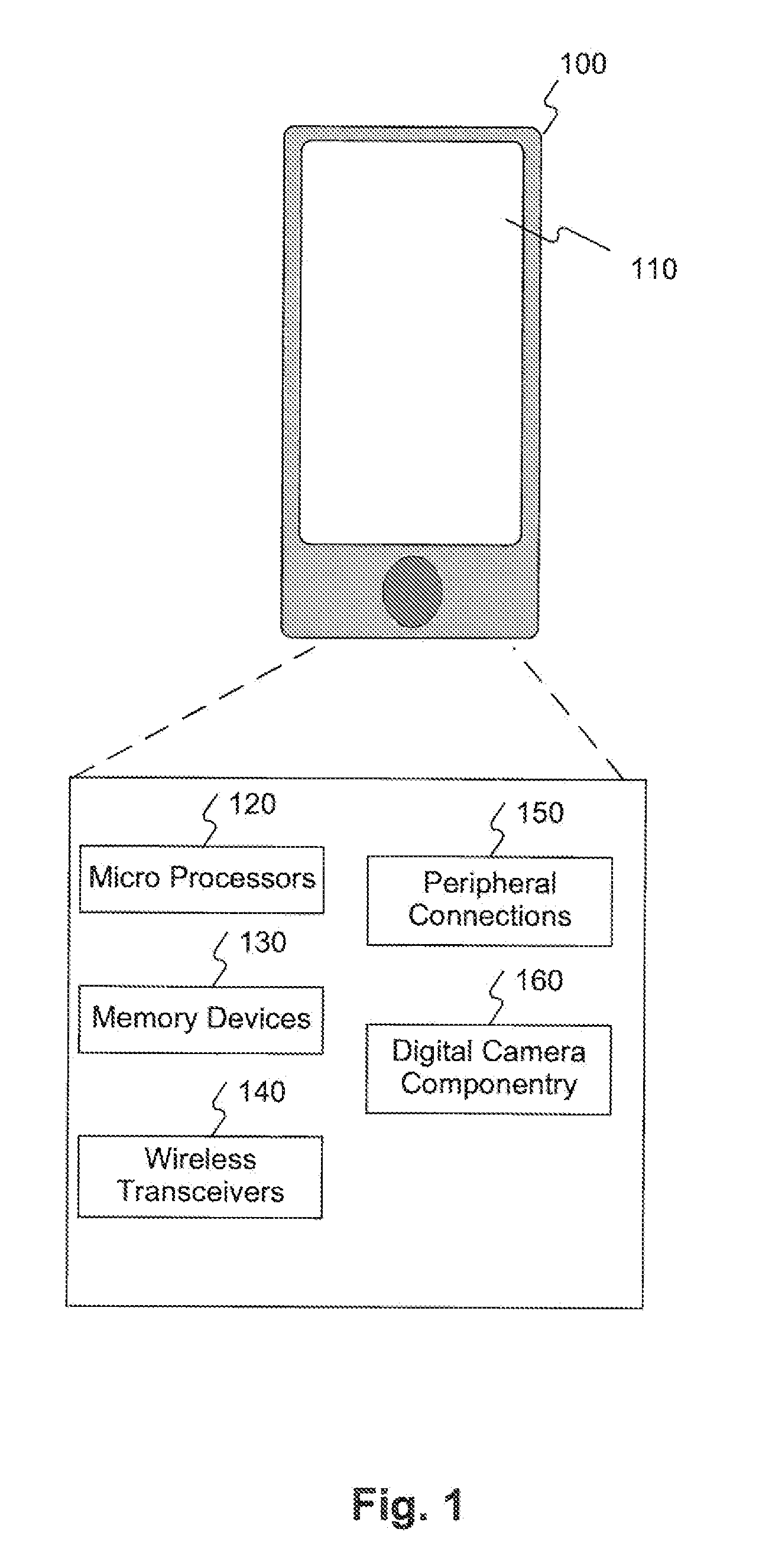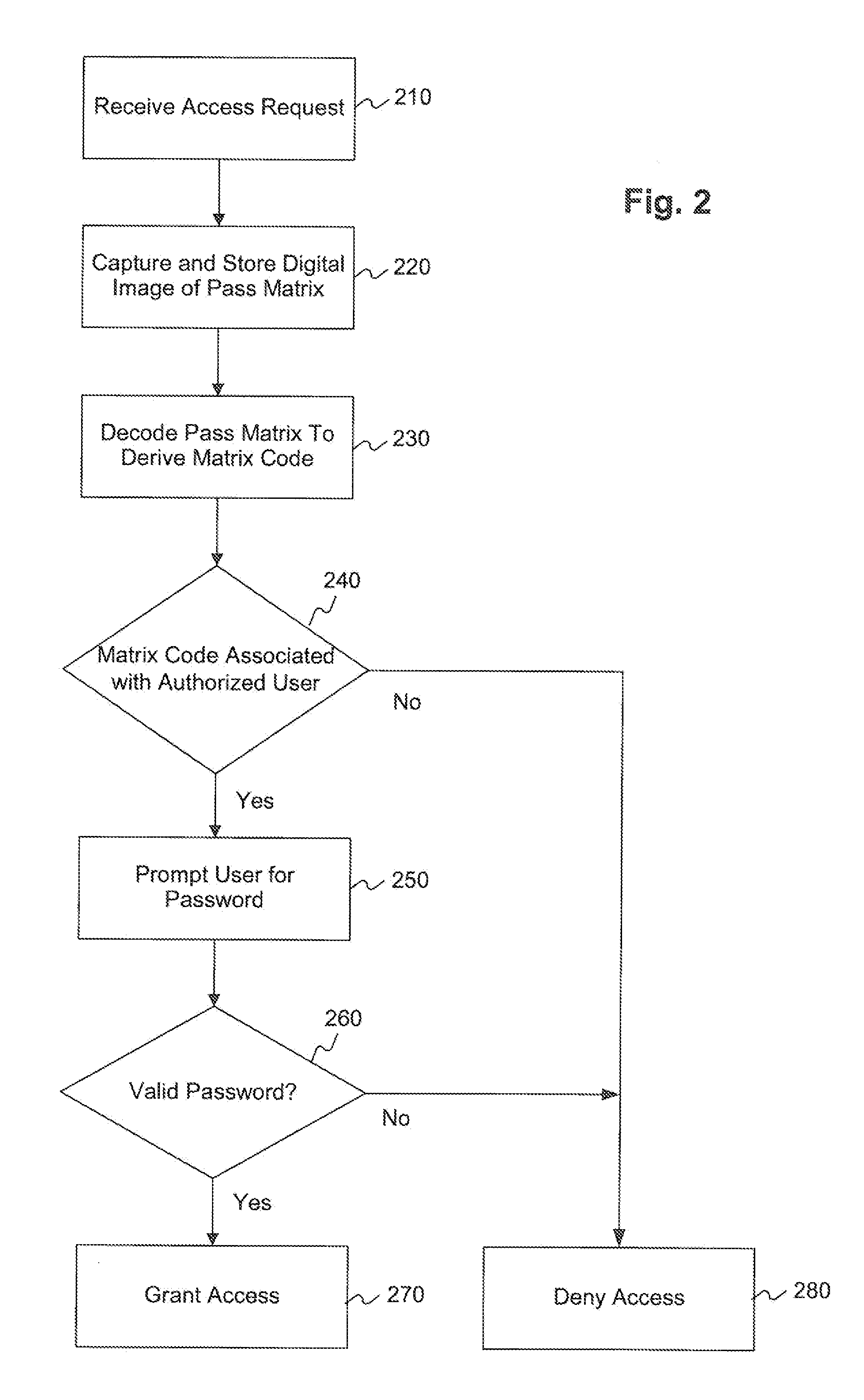Multi-factor authentication using digital images of barcodes
a multi-factor authentication and barcode technology, applied in the direction of unauthorized memory use protection, digital storage, instruments, etc., can solve the problems of preventing authorized users from gaining access to the system, unauthorized users, and single-factor authentication, so as to reduce the burden on the processor and memory, the effect of simple operation and less sensitiv
- Summary
- Abstract
- Description
- Claims
- Application Information
AI Technical Summary
Benefits of technology
Problems solved by technology
Method used
Image
Examples
Embodiment Construction
[0024]The following detailed description refers to the accompanying drawings. Wherever possible, the same reference numbers are used in the drawings and the following description to refer to the same or similar parts. While several exemplary embodiments and features of the invention are described herein, modifications, adaptations, and other implementations are possible, without departing from the spirit and scope of the invention. Accordingly, the following detailed description does not limit the invention. Instead, the proper scope of the invention is defined by the appended claims.
[0025]FIG. 1 is a diagram depicting an exemplary mobile device that may be used to implement a multi-factor authentication scheme using scanned barcodes, consistent with certain disclosed embodiments. Although depicted in FIG. 1 as a handheld mobile device, such as a smartphone or personal digital assistant (PDA), device 100 is not limited to handheld or mobile devices, but may comprise any computing de...
PUM
 Login to View More
Login to View More Abstract
Description
Claims
Application Information
 Login to View More
Login to View More - R&D
- Intellectual Property
- Life Sciences
- Materials
- Tech Scout
- Unparalleled Data Quality
- Higher Quality Content
- 60% Fewer Hallucinations
Browse by: Latest US Patents, China's latest patents, Technical Efficacy Thesaurus, Application Domain, Technology Topic, Popular Technical Reports.
© 2025 PatSnap. All rights reserved.Legal|Privacy policy|Modern Slavery Act Transparency Statement|Sitemap|About US| Contact US: help@patsnap.com



